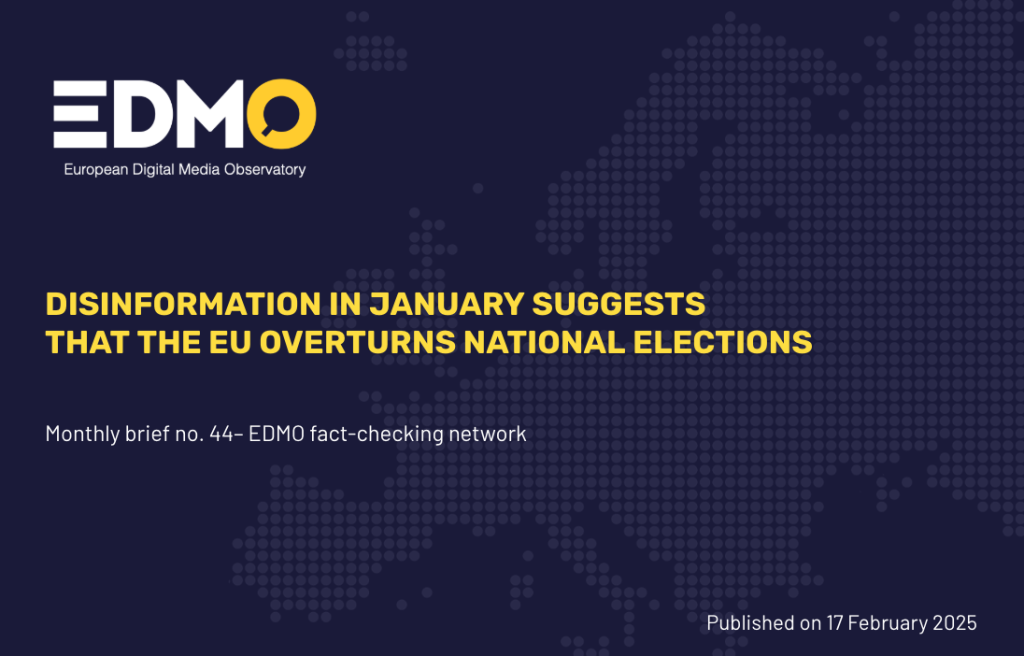Resurgence of Climate Disinformation Amidst California Wildfires and Shifting Disinformation Landscape
The digital sphere continues to be a battleground for truth, with disinformation campaigns exploiting current events and societal anxieties. A recent report by the European Digital Media Observatory (EDMO) reveals a concerning trend: climate change disinformation is regaining traction, surging to the forefront of online falsehoods in January 2025. This alarming rise coincides with devastating wildfires in Southern California, demonstrating how bad actors leverage real-world crises to propagate misleading narratives and conspiracy theories. Simultaneously, disinformation related to migration more than doubled compared to the previous month, further illustrating the dynamic and evolving nature of online manipulation.
The EDMO report, compiled from the analysis of 1,642 fact-checking articles published by 37 organizations across its network, provides a snapshot of the disinformation landscape. While disinformation related to the war in Ukraine and COVID-19 saw a slight decline, climate change disinformation experienced a significant three percentage point increase, accounting for 9% of debunked claims. This surge positions climate change as the primary target of online falsehoods in January 2025. The report also highlights a substantial increase in migration-related disinformation, reflecting the exploitation of sensitive societal issues by purveyors of misinformation. Disinformation related to the EU, the Middle East conflict, and LGBTQ+ issues remained relatively stable.
The California wildfires, a tragic consequence of a warming climate, became a breeding ground for disinformation. The disaster provided fertile ground for a range of false narratives, from manipulated images and AI-generated content to conspiracy theories and hate speech. Out-of-context visuals, designed to capture attention and amplify misinformation, flooded social media platforms. These visuals were often accompanied by fabricated narratives, including accusations against minority groups, particularly immigrants, who were falsely blamed for starting the fires and even accused of looting evacuated homes. This scapegoating tactic, reminiscent of past disinformation campaigns, aims to sow discord and exploit existing societal tensions.
Further fueling the flames of disinformation were conspiracy theories claiming deliberate manipulation of the fires. These narratives ranged from accusations of orchestrated meteorological phenomena and the use of laser beams and chemtrails to more outlandish claims involving energy weapons and intentional destruction to pave the way for "smart city" projects. Adding to the complexity of the disinformation landscape were false claims targeting high-profile figures, including Ukrainian officials and German Chancellor Olaf Scholz, falsely linking them to luxurious properties destroyed in the fires. These narratives served to paint these individuals in a negative light, furthering the aims of the disinformation campaign.
The resurgence of climate denialism, a recurring theme amidst extreme weather events, was also observed. False narratives downplaying the severity of climate change and questioning the efficacy and safety of climate mitigation measures circulated widely online. These disinformation campaigns often employ sophisticated tactics, including the use of manipulated data and cherry-picked information, to undermine scientific consensus and sow doubt about the urgency of climate action. The confluence of these different disinformation strands created a chaotic information environment, making it difficult for individuals to discern fact from fiction.
The EDMO report underscores the need for continued vigilance and robust fact-checking efforts to counter the spread of disinformation. The evolving nature of online manipulation, as evidenced by the rise of climate change and migration-related disinformation, requires a proactive and adaptive approach. Furthermore, the exploitation of real-world events, like the California wildfires, highlights the importance of media literacy and critical thinking skills to navigate the complex information landscape. Combating disinformation requires a multi-faceted approach involving collaboration between fact-checkers, technology platforms, and policymakers to mitigate the harmful effects of online falsehoods and protect the integrity of information. The rise of AI-generated content adds another layer of complexity, necessitating the development of new tools and techniques to identify and debunk synthetic media used in disinformation campaigns.


